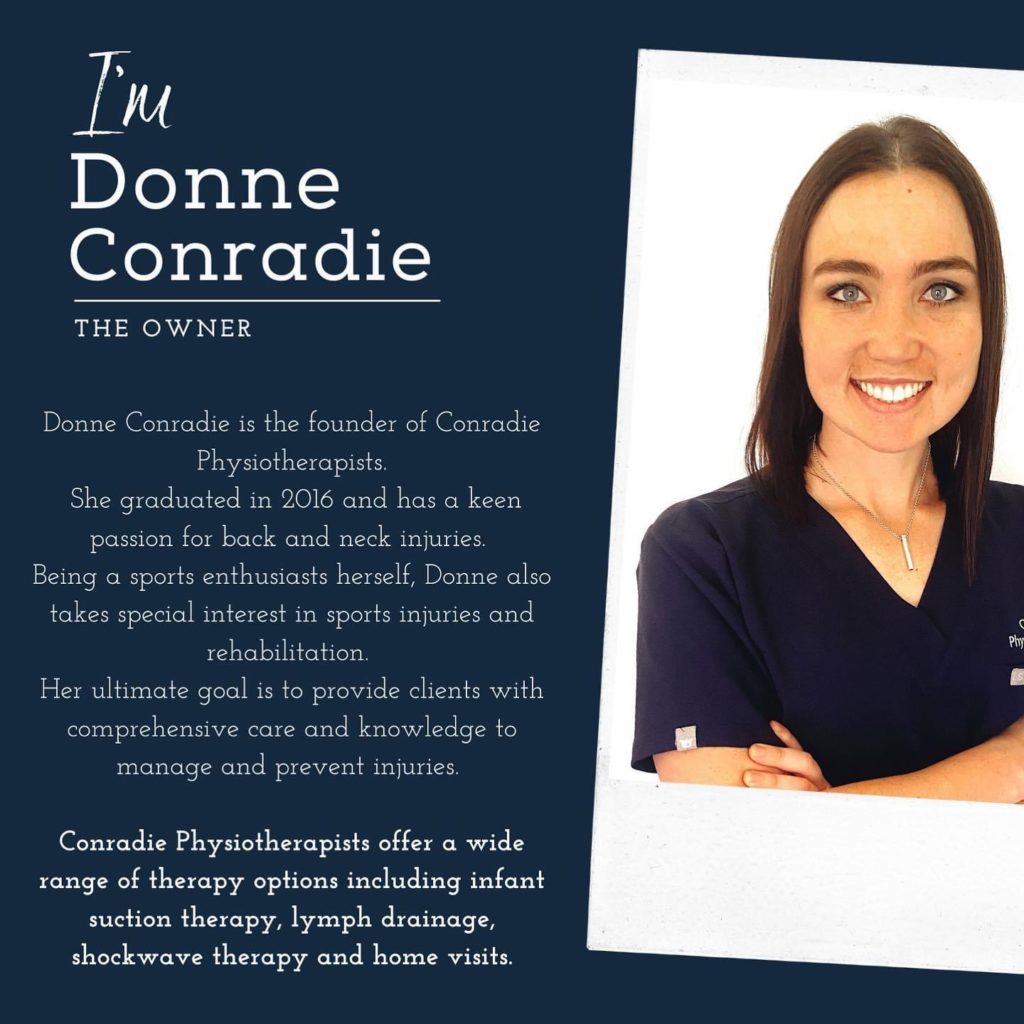
Conradie Physiotherapists – talking about Sciatica
“I have a pinched nerve”, “I popped a disc”, “I have Sciatica,” are all symptoms of back pain or leg pain due to compression and inflammation of spinal nerves or nerve roots of the lumbar spine. By Donnè Conradie
Most patients will complain of a deep, numb pain – or a constant pain – or an electrical shock pain along the leg. It is also common to present with pins and needles (paraesthesia). The pain will mostly be at the level of the buttock and at the end of the spine or down the leg. It can also continue towards the toes. In more severe cases the patient will present with weakness of the leg or foot.
A patient may be diagnosed as having Sciatica – a severe condition – when in fact they may be suffering from mechanical back pain due to stiffness of the muscles, causing an imbalance of the biomechanics between the back, pelvis and hamstrings.
Watch your posture – for your back to be in an optimal position, you need to have a strong buttock and core. You also need to optimize the flexibility of your hamstrings, hip flexors and lower back muscles.
We struggle with this due to sitting too much!
Two severe causes of back/leg pain are disc herniation (damage of cushion between vertebrae) and spondylosis (age related wear and tear- osteoarthritis).
It is NOT okay to leave any of the above pains to “hopefully go away”. Get diagnosed and treated – our multidisciplinary team can help a patient to avoid permanent damage by addressing the compression and inflammation of the nerve.

Physical manual therapy, non-steroidal anti-inflammatory drugs NSAID and exercise (prescribed by a professional) can improve or fix these problems.
Tips to help you at home
It is important to evaluate your posture and your daily activities. -Use a firm thick pillow that keeps your neck aligned with the spine.
-Make sure your mattress is firm and in good condition.
-Sleep on your side with a pillow between your knees, or on your back with a pillow under your hamstrings.
-Sleeping prone (on the tummy) will cause extension in your back which will “squash” the disc and the pain will be more intense.
-Impact should be avoided for 6 weeks, e.g., running
-The pain will be aggravated with heavy lifting.
Recovery time
After treatment, expect the recovery time to happen in stages.
-A decrease in pain will take 6 weeks.
-Increased recovery between 4-6 months.
-Complete resolution within 24-36 months.
Imaging
X-rays only show bony structures. The x-ray might show a decreased disc space or other signs of degenerative changes. An absence of pathology on the x-ray does not exclude a disc herniation.
Magnetic resonance imaging (MRI) is considered when conservative therapy is inadequate and findings should be interpreted in context with the patient’s presentation.
30-40% of young and middle-aged asymptomatic patients present with degenerative changes.
It is important to seek a multi-modal approach to treatment, sooner rather than later!
